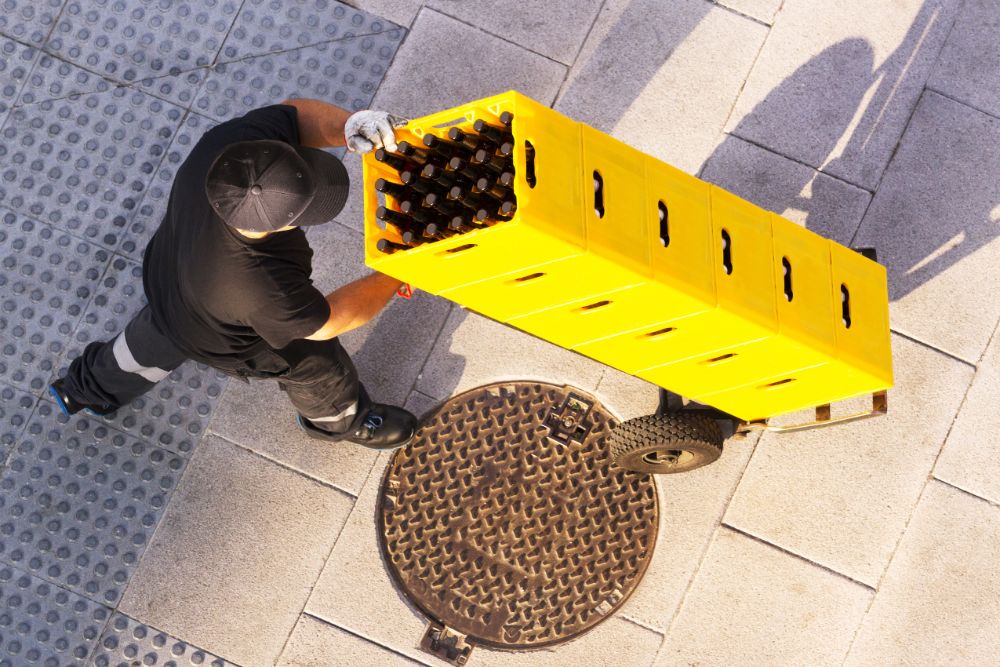For brewers, breweries, and beer manufacturers in general, when they entered the industry, they probably thought the actual brewing process would be their top concern. Quickly enough, however, they probably realized – once they started shipping their products – that a massive part of the business involves logistics. In fact, affecting a company’s bottom line, one of the most significant factors involved in this industry is learning how to ship your product efficiently.
Should you ship beer with pallets? Is there a better way? Let’s take a look at some information which may help beer manufacturers, breweries, craft brewers, etc. decide on the best method for shipping their delectable products.
The Basics of Shipping
Pallets are used by numerous industries, the beer industry included. For shipping goods, they are a great option. To figure out how many pallets you’ll need for each one of your shipments, some calculations need to be done. Here, we will refer to the 48 x 40″ pallet size, which is standard.
Size of Freight
The size of your freight can have everything to do with whether you go with a TL or an LTL shipment. TL means a truckload. Your freight has filled the truck. LTL, on the other hand, means less than (a) load. That means your freight only filled up part of the truck. This needs to be weighed out on a company by company and load by load basis. There are disadvantages and advantages to both.
Truck Types
Shipping costs will be impacted by the kind of truck you use for beer delivery. If you only ship to local restaurants as a small brewery, with no climate control, you may get away with smaller truck – a dry van. While cost-effective, the unavailable climate control could present a problem. Particularly if you deliver in hot climates.
A reefer truck or trailer is your best bet if concerns about temperature exist. Some beers are extremely temperature sensitive and must be kept cold at all times. Additionally, you will be able to carry more because the maximum allowable weight is increased exponentially over small box trucks or dry vans.
The Load Size
Pallet Weight – Remember that the total weight of your freight includes the weight of your pallet and what’s loaded onto it.
Bottles and Cans – Count on approximately 20 pounds for a 12-pack case of 12-ounce beers. For pallets, a good rule of thumb is no more than 2200 pounds, or 100 cases of beer (approximate).
Kegs – On your standard 48 x 40″ pallet here’s a guideline as to how many kegs will fit:
- 8 per pallet – 1/2 bbl
- 14 per pallet – 1/4 bbl
- 20 per pallet – 1/6 bbl
Pallets
For the transport of beer, what are the best pallets? To protect your bottom line, you may be tempted to go with cheaper pallets. That can, however, come back to haunt you. Let’s look at some specifics involving pallets today.
Plastic Pallets – Plastic pallets have many benefits including the following:
- Longer lasting
- Lighter
- Cost-effective
- Sustainable
- Smoother sides
- Sanitary
Wood Pallets – For many industries, wood has been the go-to pallet material. Their low cost is attractive. However, more and more industries – including the food and beverage industry – are going with plastic.
Features of Pallets – Whether choosing wood or plastic pallets, to safeguard employees and your products, a number of features are available. Some of these include the following:
- Solid tops
- Tie-down points
- Interlocking feet
- Ledges… and more
Prevent Load Shifting
Remember this – unless they are adequately secured, kegs, full cases, and pallets may shift during transport. Straps and securing methods must be used at all times. Additionally, as an extra security blanket, consider plastic wrapping pallet-contained loads.




